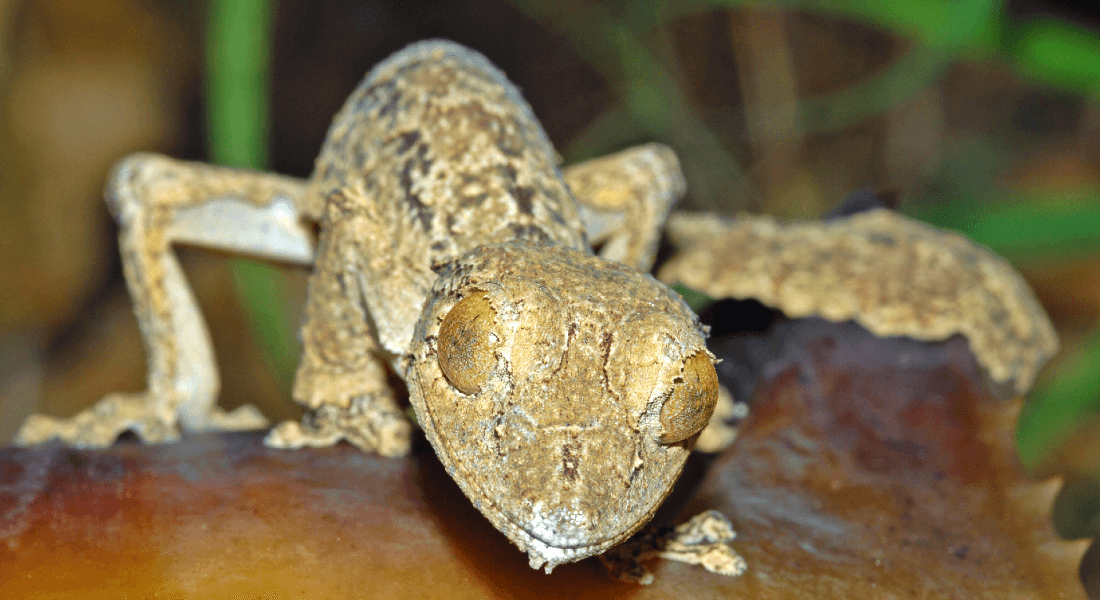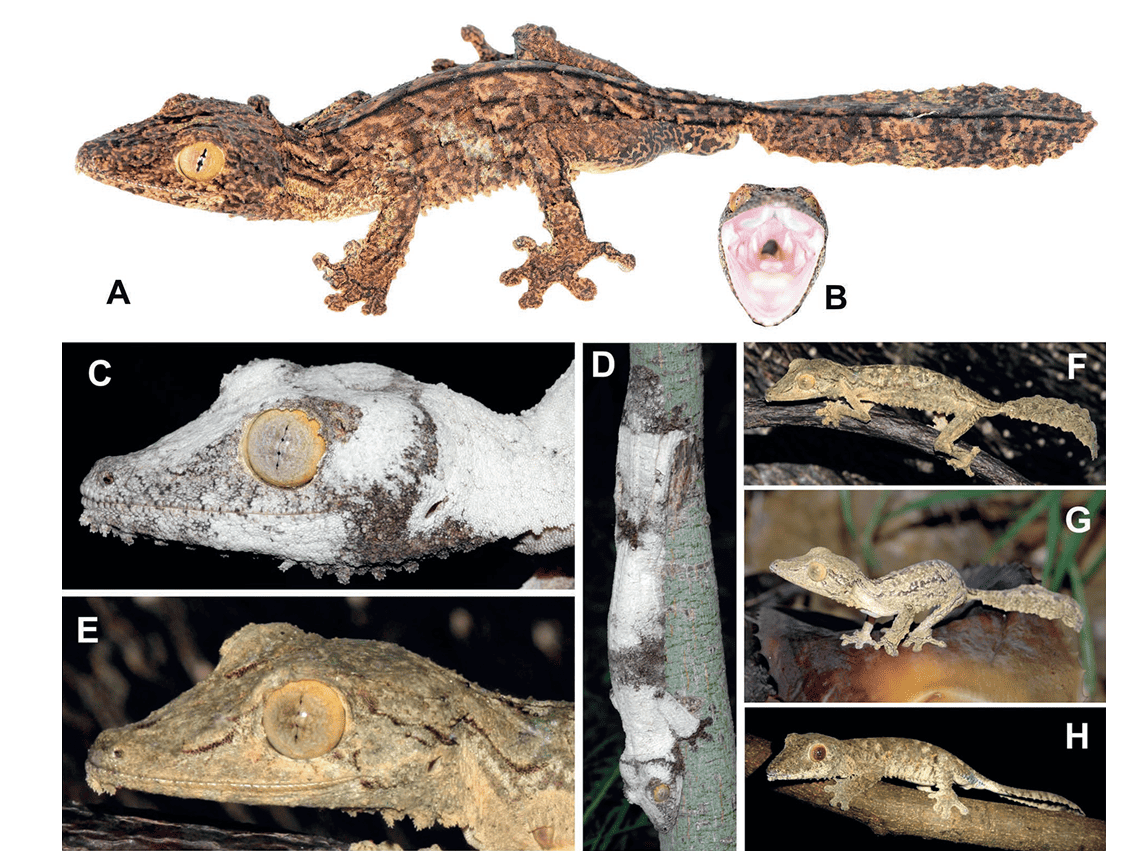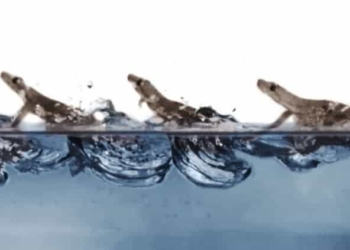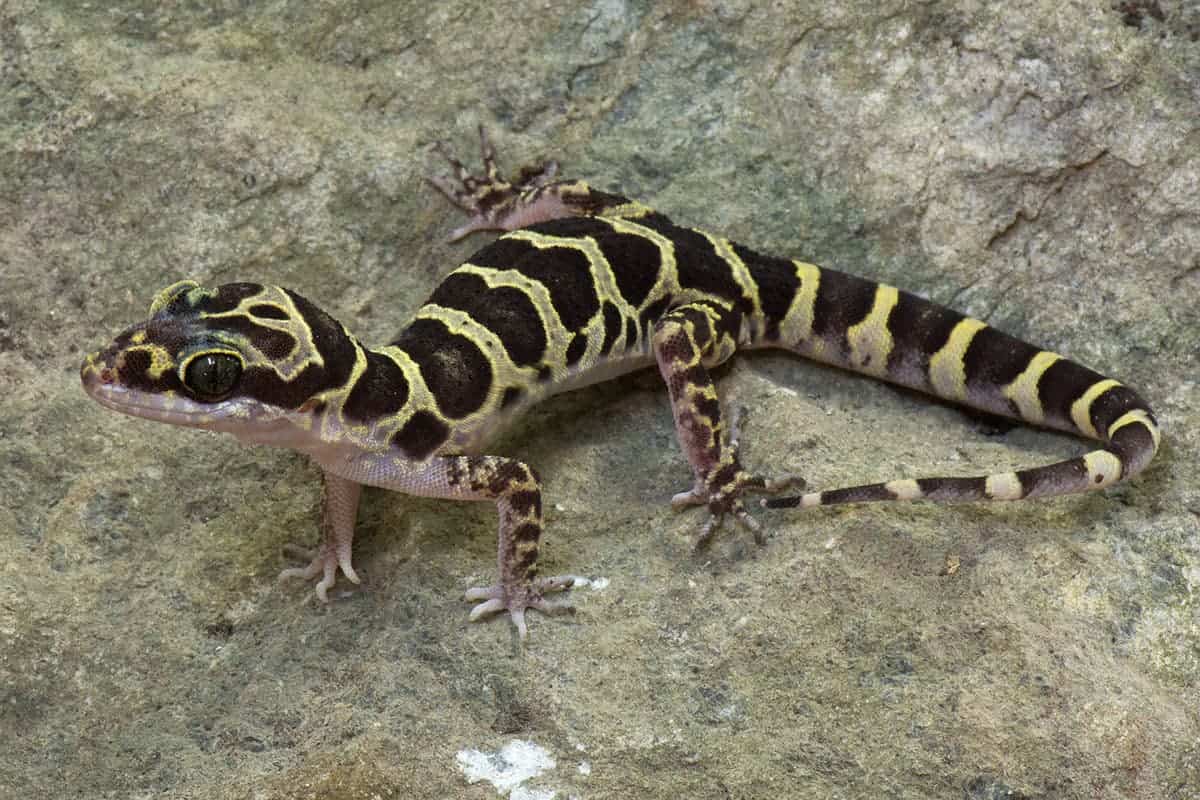An international team of researchers has discovered a new gecko species (Uroplatus garamaso). This species is a master of disguise. It resembles tree bark during the day and had been mistaken for a related gecko for decades. The researchers had first found it in Madagascar in 2000 but it took many years for them to revisit the area and understand that this was a different species.

The new species is a leaf-tailed gecko, animals usually described as masters of camouflage. Geckos have a broad and triangular head and their name comes from the leaf-like similarity of their tail. Their texture helps them to hide within their surroundings, blending in with the bark of trees and leaves. They live in forests in the lowlands where their hiding ability is extremely useful.
“Leaf-tailed geckos are amazing animals. They are so strange and look completely different than other reptiles. We began to suspect that this Uroplatus from Madagascar was a different species more than twenty-three years ago,” Mark Scherz, study author and curator at the Natural History Museum of Denmark, said in a news release.
A long search
Finding geckos is hard enough in the first place, but telling them apart from other species can be even more challenging.
The new gecko species is very similar to another one, Uroplatus henkeli. Until now, researchers had no idea they were different species. However, they were able to spot a feature that differentiates them – the color of the tip of their tongue. In the new species, it’s pink, while in the case of its relative, it’s black.
At 20 centimeters in length, Uroplatus garamaso is also a bit smaller than Uroplatus henkeli. It also has a narrower tail, the researchers said. But all these differences are hard to observe, and it’s not the first time geckos have escaped detection.
The new species is the latest in a series of Uroplatus geckos found in Madagascar in recent years. In fact, it’s an important puzzle piece that helps researchers understand how geckos emerged and evolved.
“We are close to completing the taxonomic inventory of the genus, but this is only the beginning of our understanding of their evolution and ecology,” Scherz said. “The mouth color, which has been so useful in identifying different species, has a completely unknown function. There is much that we still don’t know about these geckos.”
The new species lives in a more restricted area than its relative Uroplatus henkeli. The researchers found it in humid and dry forests in the north of Madagascar, such as in the Diana region. A section of these forests is protected under the local law, as Mongabay explained. However, logging and forest fires are a severe risk outside these areas.
However, it’s already considered a rare species and is described as severely endangered.
Asking for help
Geckos are in big trouble. They’re traded for use in traditional Chinese medicines and are sold as pets, which are mainly exported to the European Union and the United States. The vast majority of species in trade are wild-caught, but many are misleadingly labeled as ‘bred in captivity’. Trade is largely concentrated in Southeast Asian countries, such as Indonesia and Thailand.

The researchers recommended carrying out more long-term field studies for selected populations of leaf-tailed geckos, adding that breeding programs might be necessary to preserve this rare species. In the meantime, they believe it would be beneficial if pet hobbyists could continue keeping the animals to learn more about their way of life.
“It will give private pet hobbyists the chance to contribute to our understanding of the life history and behavior of these fascinating geckos,” Scherz said. “It is important that they continue to publish their experiences with regards to the keeping and breeding of these geckos. As well as potential failures, because this kind of data will be crucial.”
The study was published in the journal Salamandra.






